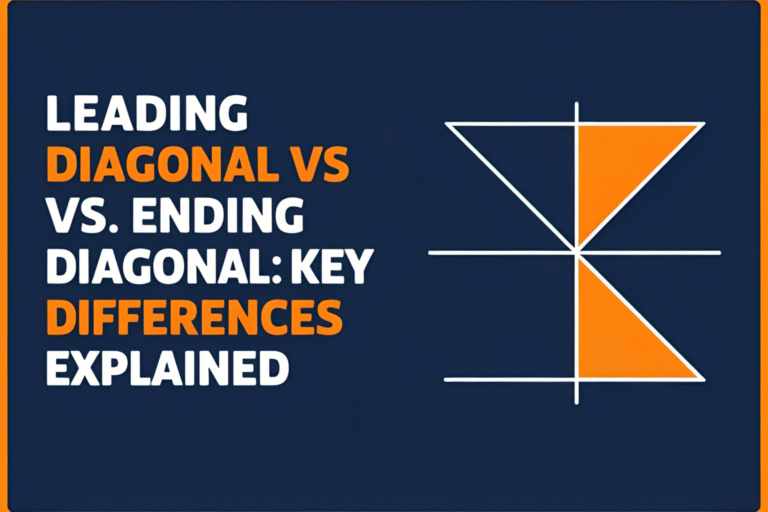Understanding the 5-Wave Impulse Pattern in Elliott Wave Theory
The 5-wave impulse pattern is the foundation of Elliott Wave Theory. It forms the driving force behind market trends and reflects the collective psychology of investors as they push prices in one direction.
Whether you’re analyzing stocks, crypto, or forex markets, understanding this pattern is crucial for applying Elliott Wave Theory effectively.
What Is a 5-Wave Impulse?
An impulse is a five-wave movement that occurs in the direction of the main trend. It consists of three motive waves (1, 3, 5) and two corrective waves (2, 4) in between.
Here’s how the sequence flows:
- Wave 1 – Initial push in the trend direction
- Wave 2 – A pullback that retraces part of Wave 1
- Wave 3 – The strongest wave, often with heavy volume
- Wave 4 – Another correction
- Wave 5 – Final push before a trend reversal or major correction
Visual Breakdown of the Impulse Structure
markdownCopyEdit Wave 5
↑
/ \
Wave 3 \
↑ \
/ \ \
Wave 1 \ \
↑ \ Wave 4
Start Wave 2
Each of these five waves is itself composed of smaller subwaves, especially visible on lower timeframes. This fractal behavior allows you to zoom in and analyze wave structure in greater detail.
Rules for a Valid 5-Wave Impulse Pattern
To correctly identify an impulse pattern, the following rules must be respected:
- Wave 2 must not retrace more than 100% of Wave 1.
- Wave 3 must never be the shortest among Waves 1, 3, and 5.
- Wave 4 must not enter the price territory of Wave 1 (no overlap).
Violating any of these rules invalidates the wave count.
Characteristics of Each Wave
- Wave 1: Often hard to spot, as it’s the beginning of a new trend.
- Wave 2: A correction that tends to be steep and emotional.
- Wave 3: The most powerful wave, driven by increased participation.
- Wave 4: A slower correction that is usually less volatile than Wave 2.
- Wave 5: Final burst of optimism before a reversal or larger correction begins.
Trading Tips Using the 5-Wave Impulse
- Wave 3 is typically the best wave to trade due to strong momentum.
- Use Fibonacci retracements to anticipate Wave 2 and Wave 4 corrections.
- Combine wave counts with volume and RSI to confirm impulse strength.
- Watch for divergence in Wave 5, which often signals a weakening trend.
Common Mistakes to Avoid
- Counting corrections as impulse waves
- Ignoring the non-overlap rule between Waves 1 and 4
- Misidentifying wave starts without checking higher timeframes
- Forcing a wave count to fit your bias
Conclusion
The 5-wave impulse pattern is the core of Elliott Wave Theory. Mastering it allows you to identify the dominant trend, time entries during Wave 3, and prepare for reversals after Wave 5. Always follow the core rules and validate your counts with supporting tools to improve accuracy.
Understanding this pattern is the first step to reading markets like a professional.
FAQs
What is the 5-wave impulse pattern used for?
It’s used to identify and trade with the main trend direction in any market.
Which wave is the strongest in an impulse?
Wave 3 is usually the longest and strongest.
Can Wave 2 retrace all of Wave 1?
No. If it does, the wave count is invalid.
Why is Wave 5 important?
It often completes the trend before a larger correction begins.
Are impulse waves always upward?
No, impulse waves can move upward or downward, depending on the trend.





